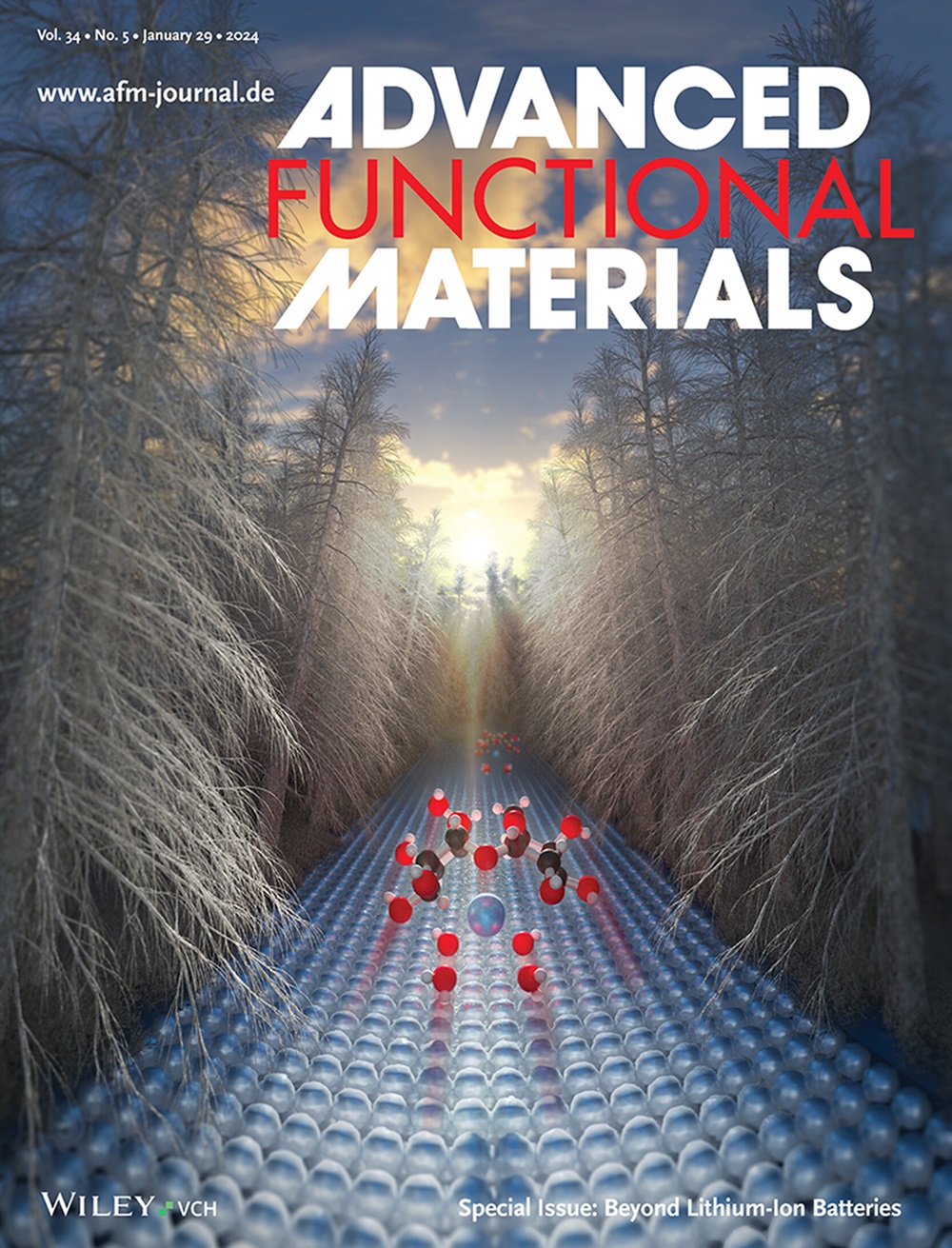Mixed-Dimensional 0D-DNA-2D Heterostructures Beyond van der Waals: A DNA-Templated Strategy for Optoelectronic Tunability
IF 18.5
1区 材料科学
Q1 CHEMISTRY, MULTIDISCIPLINARY
引用次数: 0
Abstract
The assembly of nanomaterials of different dimensionality into mixed-dimensional heterostructures can allow circumventing individual nanomaterials intrinsic limitations toward the development of novel hybrids for a variety of technological applications. Critical to this end is the ability to control the interface of the single components in terms of spatial separation and chemical nature, in order to optimize their synergistic coupling, tailor their optoelectronic properties, and potentially impart novel functionalities. Herein the controlled assembly and optoelectronic tunability of 0D-2D heterostructures is demonstrated, employing DNA as a linking and template moiety for the modular assembly of metal sulfide nanoparticles (NPs) on MoS2, with nanoscale control over their separation and ability to concomitantly assemble different kind of NPs on the same DNA template linker. The developed aqueous solution-processable approach permits the systematic modulation of charge carrier doping and trion formation in the transition metal dichalcogenide (TMD) in a non-destructive manner. Moreover, it allowed to tailor the photoinduced electrical response -with ultrahigh detectivity- of NPs-TMD phototransistors to different wavelengths, thanks to the concomitant presence of different nanoparticles by design. These are key requirements for optimal and scalable implementation of low-dimensional materials and their heterostructures in optoelectronic devices.

超越范德华的混合维0D-DNA-2D异质结构:一种用于光电可调性的dna模板策略
将不同维度的纳米材料组装成混合维度的异质结构,可以绕过单个纳米材料的固有限制,从而开发出各种技术应用的新型杂化材料。实现这一目标的关键是能够在空间分离和化学性质方面控制单个组件的界面,以优化它们的协同耦合,定制它们的光电特性,并可能赋予新的功能。本文展示了0D-2D异质结构的受控组装和光电可调性,利用DNA作为连接和模板片段,在二硫化钼上模块化组装金属硫化物纳米粒子(NPs),并对其分离进行纳米级控制,以及在同一DNA模板连接器上同时组装不同种类的NPs的能力。所开发的水溶液可加工方法允许以非破坏性方式系统地调制过渡金属二硫化物(TMD)中的载流子掺杂和三离子形成。此外,由于设计中同时存在不同的纳米颗粒,它允许将NPs-TMD光电晶体管的光致电响应(具有超高的探测性)调整到不同的波长。这些都是光电器件中低维材料及其异质结构优化和可扩展实现的关键要求。
本文章由计算机程序翻译,如有差异,请以英文原文为准。
求助全文
约1分钟内获得全文
求助全文
来源期刊

Advanced Functional Materials
工程技术-材料科学:综合
CiteScore
29.50
自引率
4.20%
发文量
2086
审稿时长
2.1 months
期刊介绍:
Firmly established as a top-tier materials science journal, Advanced Functional Materials reports breakthrough research in all aspects of materials science, including nanotechnology, chemistry, physics, and biology every week.
Advanced Functional Materials is known for its rapid and fair peer review, quality content, and high impact, making it the first choice of the international materials science community.
 求助内容:
求助内容: 应助结果提醒方式:
应助结果提醒方式:


